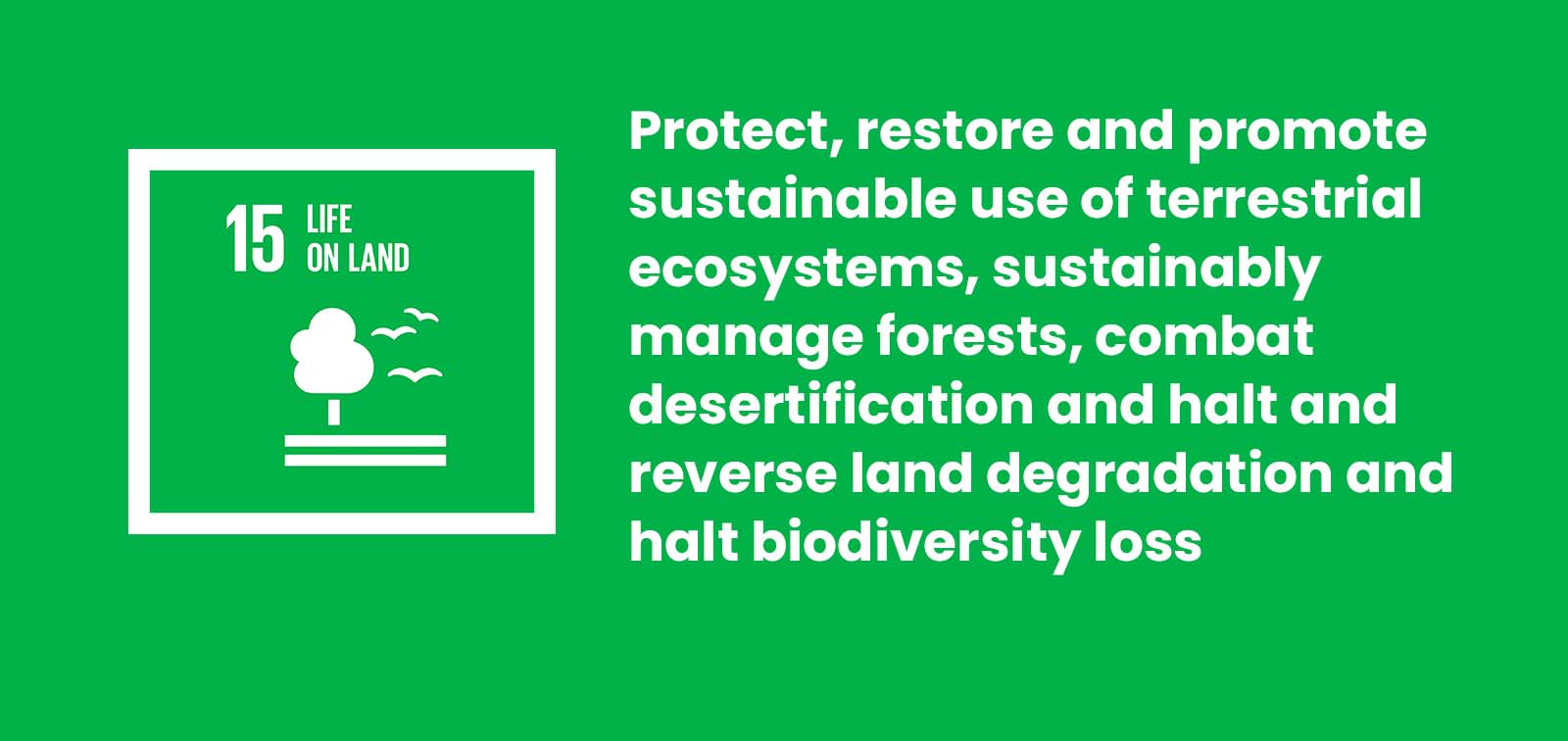SDG 15 – Life on Land

The aim of this Sustainable development Goal (SDG) is to ‘Protect, restore and promote sustainable use of terrestrial ecosystems, sustainably manage forests, combat desertification, and halt and reverse land degradation and halt biodiversity loss.’
Biological diversity—or biodiversity—is the variety of life on Earth and the natural patterns it forms. We are all part of our planet’s ecosystem, and we have caused severe damage to it through loss of natural habitats and land degradation caused by bad practices such as deforestation. In order for life to flourish in the future we need to:
- Conserve and restore terrestrial and freshwater ecosystems.
- End deforestation and restore degraded forests.
- Protect biodiversity and natural habitats.
- Ensure conservation of a wide variety of ecosystems by establishing protected areas.
- Eliminate poaching and trafficking of protected species.
- Prevent invasive alien species in land and water ecosystems.
- Increase financial resources for conservation and restoration of ecosystems.
Activities for SDG 15
Check out the biodiversity of an area. This could be your local park, backyard, or near your scout den or campsite. Use butterfly nets and pond dipping nets to collect insects and other small animals, binoculars to check out birds, or just plain observation to note all the different animals you can find. Sometimes there may just be signs of the animals, like nests, scratches on trees, or droppings on the ground. Make a list and tally your results.
Next, go to an area that is different. This could have bare soil with fewer plants and places for animals to live. Make a list as before and compare the two areas.
Is there any way you could improve the second area to increase biodiversity?
Habitat restoration. Contact local conservation groups to find out if there are invasive weeds in your area, identify and remove them. Remove rubbish if it is a problem there. Contact the local council if you want to carry out a replanting program in a park. Obtain plants from them or try collecting seeds from plants native to the area, and growing the plants. Try to get a range of plants that will provide flowers, fruits and leaves as food for animals, and shelter when the plants are bigger. After planting, the young plants need to be cared for by regular watering and keeping weeds under control. Monitor your restored area to find if the biodiversity has improved.

